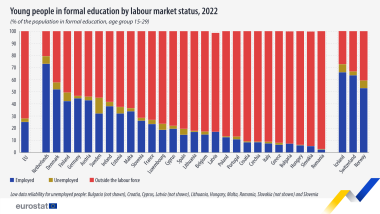Welcome To Statistics Explained
Statistics Explained, your guide to European statistics. Statistics Explained is an official Eurostat website presenting statistical topics in an easily understandable way. Together, the articles make up an encyclopedia of European statistics for everyone, completed by a statistical glossary clarifying all terms used and by numerous links to further information and the latest data and metadata, a portal for occasional and regular users.
Most visited:
- Quality of life indicators - overall experience of life
- Inflation in the euro area
- Excess mortality statistics
- Electricity price statistics
- GDP per capita, consumption per capita and price level indices
- Minimum wage statistics
- Beginners:Statistical concept - Percentage change and percentage points/fr
- Migration and migrant population statistics
- Overweight and obesity - BMI statistics
- Unemployment statistics

